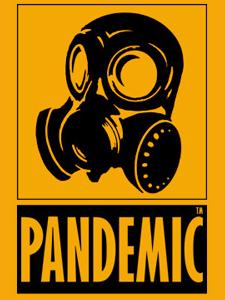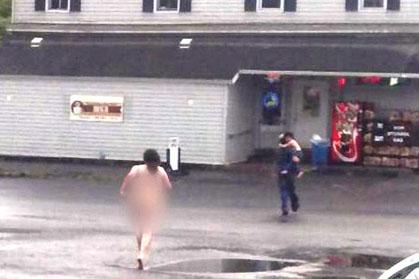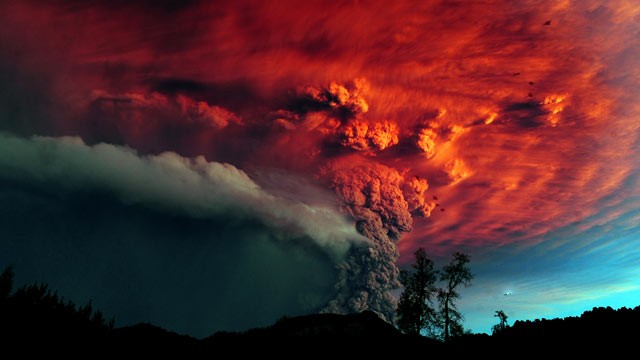Tag Archives: state
CDC visitors exposed to deadly germs?
 Washington (CNN) — It’s a highly secured, sophisticated research lab studying deadly diseases such as bird flu, monkeypox, tuberculosis and rabies.
Washington (CNN) — It’s a highly secured, sophisticated research lab studying deadly diseases such as bird flu, monkeypox, tuberculosis and rabies.
It’s in a facility called Building 18, which cost taxpayers $214 million.
And now, the Biosafety Level 3 lab at the Centers for Disease Control and Prevention in Atlanta is also the subject of a congressional investigation after a potentially dangerous airflow leak at that lab, CNN has learned.
The leak occurred on February 16, when air flowed the wrong way out of a germ lab into a clean-air corridor, rather than through the powerful HEPA filter that cleans the air, congressional sources and CDC officials said. Visitors touring the facility were in the clean corridor when they observed a puff of air being pushed out from the lab through a slot in a door window.
CNN recommends: Deadly bird flu could become airborne
If experiments had been under way at the time of that air leak, experts say, unprotected visitors could have been exposed to deadly germs, although an epidemic would have been unlikely.
According to U.S. Rep. Michael Burgess, a Texas Republican and a medical doctor, the House Energy and Commerce Committee has asked the CDC for documents about that incident. The request came in the wake of a report on internal CDC e-mails about the incident, first reported by USA Today last week.
“The biggest concern was that there was a contingent of visitors who were walking through the building,” Burgess said. “And had one of those people been stricken or made ill or worse, obviously that would have been devastating.”
The lab handles small mammals such as rats, ferrets and mice as part of its experiments with pathogens, according to CDC officials. They say animals were in the lab at the time of the air leak, but they were secured in filtered cages.
CDC officials say the lab was clean, was not active at the time, and no one got infected.
“At no time during recent incidents featured in the media were CDC workers or the public in harm’s way,” agency spokesman Tom Skinner said. “This unique facility features multiple security layers specifically designed to protect workers and the public in the event of an incident.”
In a statement released to CNN, Burgess’ committee said, “We will actively work to find out if there are additional concerns or incidents associated with Building 18. Any anomaly or breach is of concern, and we will work to ensure the integrity of the facility is maintained and that our scientists are safe.”
There has been at least one other safety-related incident in that same building where February’s air leak occurred.
In 2008, it was discovered that a high-containment lab door was sealed with duct tape. That incident was first reported by the Atlanta Journal-Constitution and confirmed to CNN by Skinner.
Robert Hawley, former safety chief at the U.S. Army Medical Research Institute of Infectious Diseases, said the CDC has many safety layers in place at its labs. Hawley says researchers at the Biosafety Level 3 lab work in biosafety “cabinets” within the lab itself.
“Nothing is handled outside that cabinet,” Hawley said. “So they’re working with minute amounts of material, and the chances of aerosol are negligible.”
But there are questions about a possible cover-up.
In an internal e-mail, reported by USA Today, CDC biologist Kismet Scarborough said the centers “… will do anything … to hide the fact that we have serious problems with the airflow and containment in this whole building.”
CNN has not been able to independently verify that e-mail. But in response, Skinner said, “CDC will continue to take an open, transparent and inclusive approach to address any safety challenge in a manner that will ensure the safety of our workforce and the public.”
Skinner said the agency “intends to cooperate fully with Rep. Burgess and the committee to address any questions they may have about Building 18 at CDC.”
ZOMBIE OUTBREAK – NEW YORK MOM GOES ON RAMPAGE!!
Another zombie attack – New York mom on ‘Bath Salts’ attacks her three-year-old – VIDEOS
Deranged woman tried to strangle her pit bull and bite a police officer before she died
A New York woman, allegedly high on “bath salts”, was killed after police taser her. Onlookers photographed Pamela McCarthy who was attacking her three-year-old son.
Onlookers photographed Pamela McCarthy who was attacking her three-year-old son.
The 35-year-old went into cardiac arrest after a run in with state troopers outside her apartment in Munnsville on Tuesday. The police were called to the scene at 7.45pm with reports that McCarthy was punching and choking her toddler and trying to strangle her pit-bull. A neighbor then photographed her running towards her terrifying son, who sought refuge with his father, Jason Williams.
McCarthy’s attack is just one in a spate of violent incidents reported across the United States involving the drugs “bath salts”, a synthetic drug, known as “the new LSD”.
Last month Rudy Eugene, who was believed to be on “bath salts” chewed off, homeless man, Ronald Poppo’s face, in Miami. In Louisiana, Carl Jacquneaux also bit off a piece of his neighbor’s cheek. Earlier this week a North Miami man stripped naked and exposed himself to a three-year-old girl while on the drug.
In fact these attacks, thought to be the blame of this legal drug, are becoming so prevalent that the media is now labeling them under the term “Zombie Apocalypse”.
A neighbor who witnessed McCarthy’s attack told NewsChannel 9 WSYR “She was… just running back and forth around the street and she got a hold of one of her dogs and she was rolling around on the ground with her legs wrapped around it – she was strangling the dog.”
Another said: ‘She was definitely on something. Who does that?’
When the police arrived McCarthy was described as “violently combative” and growled at the police, and even tried to bite one of the officers.
State trooper Christopher Budlong tried to subdue her using pepper spray, but it had no effect. He then used a taser on the woman but was unable to handcuff her. She was then taken into custody and then went into cardiac arrest.
Her boyfriend Williams said she had a history of drug abuse but was shocked by her behavior. Their son lucky escaped the attack with minor injuries and is now in the custody of William’s mother.
He said “I told her mom, “She needs help”,’ Williams told WSYR. ‘Everyone says to get rid of her because I tell all mean stories. I got nothing good to say. I love her…love her to death…then I seen that.”
Here’s the ABC News report:
Here’s the CNYCentralNews eyewitness report:
SuperVolcanoes – This Is the Way the World Ends? Volcanoes Could Darken World

Super-volcanoes have probably caused more extinctions than asteroids. But until now it has been thought that these giant volcanoes took thousands of years to form — and would remain trapped beneath the earth’s crust for thousands more years — before having much effect on the planet.
But new research indicates these catastrophic eruptions, possibly thousands of times more powerful than the 1980 eruption of Mount St. Helens, may happen only a few hundred years after the volcanoes form. In other words, they may have a very “short fuse,” according to researchers at Vanderbilt University.
Such an event could make thermonuclear war or global warming seem trivial, spewing untold tons of ash into the atmosphere to block sunlight. The result would be many years of frigid temperatures, wiping out millions of species. A super-volcano that erupted 250 million years ago is now believed to have created the greatest mass extinction the world has ever seen, wiping out up to 95 percent of all plant and animal species. Some renegade scientists believe it was a volcano, not an asteroid, that killed off the dinosaurs 65 million years ago.
But is global suicide lurking right below our feet? Is a super-volcano about to blow its top? Not as far as scientists can tell. Such a volcano results from the accumulation of a giant pool of lava just a few miles below the ground, and there is no known formation anywhere on the planet that is expected to erupt in the immediate future.
Scientists, who could be wrong about that, have thought for decades that once that pool forms, it stays there for thousands of years before erupting. But the new study by geophysicists from Vanderbilt, along with colleagues at the University of Chicago and elsewhere, documents several lines of research showing that the trigger could be pulled quickly, possibly within a few hundred years.
“Our study suggests that when these exceptionally large magma pools form they are ephemeral and cannot exist very long without erupting,” Vanderbilt’s Guilherme Gualda said in releasing the study, published in the journal Public Library of Science ONE.
That research, as well as earlier research that led to a very different conclusion, was based on the formation of crystals in the molten magma that decay at known rates and thus provide a geological clock, dating various events in the history of the volcano.
According to Gualda, previous researchers looked at the decay of zircons, which are common in volcanic rocks, and concluded that the giant magma pools could exist for 100,000 years. But his team looked at the crystallization of quartz, the most abundant mineral in volcanic deposits, and concluded that such a pool would have to erupt in one-tenth of that time, and possibly in only about 500 years.
That makes the threat of super-volcanoes a bit more serious, but there’s no reason to panic.
Gualda’s team studied deposits in the Long Valley Caldera in northeastern California, where a violent eruption blew 150 cubic miles of molten rock into the atmosphere, blanketing much of North America with hot ash and dropping the earth’s surface more than a mile as it sank into the area once occupied by the magma. That was about 760,000 years ago, but all these years later the region still keeps a lot of scientists on the edge of their seats.
The Long Valley geology began misbehaving again in 1978 when a 5.4 earthquake struck six miles southeast of the caldera, suggesting that the volcano might be reasserting itself. In subsequent years that was followed by swarms of small quakes, which are closely associated with pending volcanic eruptions.
A couple of decades ago, trees began dying on nearby Mammoth Mountain from large amounts of carbon dioxide seeping from the magma, according to the U.S. Geological Survey.
Today, the caldera seems to be quieting down, despite several recent bursts of seismic events, but it is probably the most closely watched volcano on the planet. Scientists with the USGS are keeping a close eye on it, monitoring every little belch, and they insist there is no reason for the folks who live in California to be concerned. At least not yet.
Meanwhile, scientists at Oregon State University have been focusing their attention on Yellowstone National Park, where an eruption a couple of million years ago is believed to have been 2,000 times larger than Mount St. Helens. That region also shows constant signs of seismic unrest, and there have been eruptions there several times in the past, according to the Oregon researchers.
Incidentally, researchers at Washington State University in Pullman, who have also been studying Yellowstone, concluded earlier this year that the big eruption 2 million years ago wasn’t one blast, but two, separated by about 6,000 years.
But just because it was split into two parts doesn’t mean it was benign. The Washington researchers believe the first blast was the biggest, and it darkened the sky with ash from California to the Mississippi River.
So super-volcanoes cannot be ignored, and now it seems they can pull the trigger much more quickly than anyone had thought.
